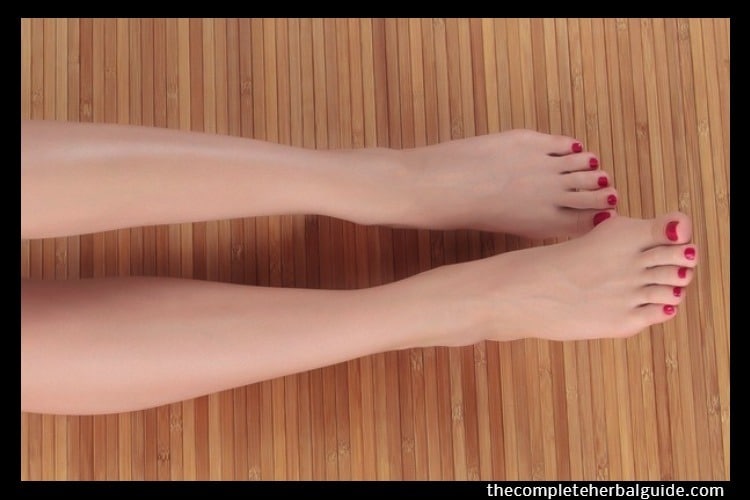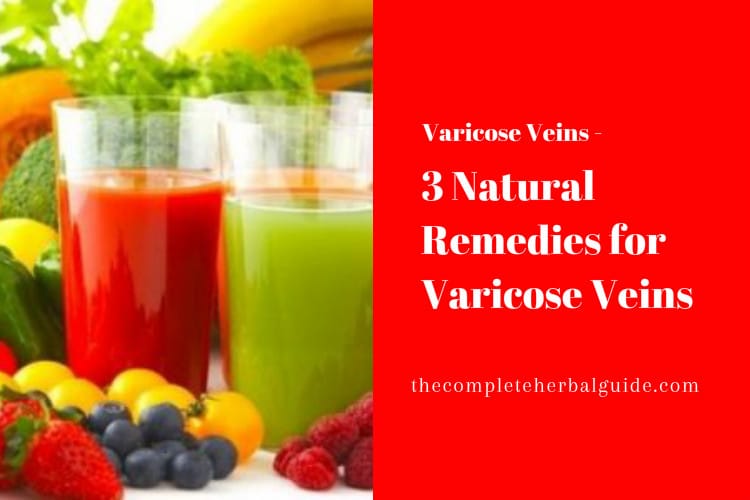
15 Ways to Prevent Spider Veins
They aren’t dangerous, but they’re not fun to look at, either – spider veins, the cousins of larger varicose veins, are enlarged red or blue blood vessels that live close to the skin’s surface and often form a branching or web-like pattern. They often appear on the legs or face but can occur almost anywhere. Causes of spider veins include hormonal changes, obesity, being sedentary and sun exposure. While spider veins aren’t always preventable, there are some things you can do to avoid this unsightly problem.
Table of Contents
Follow these fifteen tips to reduce your chances of getting spider veins.
Wear sunscreen
Not only will sunscreen protect you from skin cancer and early skin aging like wrinkles and dark spots, it will also help prevent spider veins – especially on the face.
Don’t cross your legs
Sitting with your legs crossed for too long can slow blood flow in your legs and may cause vessel damage. This can lead to a weakening of the vein valves and walls and contribute to spider and varicose veins.
Elevate your legs
When you’re resting, put your feet up to help take the pressure off your legs and feet and help blood drain back to your heart. This will decrease the pressure on the veins and skin and make them less likely to weaken.
Get good footwear
Leave your high heels for special occasions – low-heeled shoes will help promote good blood flow. Also, avoid tight clothes that constrict you at the waist, groin or legs, as these can cause a backup of blood in the lower extremities. Compression stockings or socks can also help blood get back to your heart and keep your veins from enlarging.
Gentle massage
Blood pooling in the veins is one major problem that exacerbates varicose veins. It causes the lax walls of the veins to expand and get twisted, impeding the blood flow further. Formation of blood clots is another risk. It always helps to keep the legs at a slightly elevated position while sitting and lying down to allow the venous blood to flow towards the heart. But massage is a more active way to increase blood circulation, although it should be administered very gently in people with varicose veins.
Massaging the legs with gentle upward strokes can smoothen out the twisted veins and accelerate the blood flow. Never use pressure directly on the bulging veins. Use olive oil or coconut oil for lubrication. You can add a few drops of the essential oils of peppermint or wintergreen for a soothing effect.
Compression
Applying uniform pressure on the legs with specially designed compression stockings is a tried and tested remedy for varicose veins. Loss of elasticity of the blood vessels and their consequent enlargement reduces the efficiency of the venous valves trying to stem the backflow of blood. The gentle, yet consistent pressure compresses the veins, reducing their diameter. This helps the valves to work more effectively to prevent the backflow. The additional support for the venous walls facilitates the smooth flow of blood, reducing the risk of stagnation and blood clot formation.
When used at the initial stages of varicose veins, compression stockings can stop the progress of the condition, or even reverse it. Several types of compression garments available, but you should always seek medical advice to find out what type is best suited to your condition.
Mud packs
Applying a mudpack to varicose affected legs may help reduce vein enlargement. Significant reduction in pain is often reported after mud pack treatment. Fine clay such as Fuller’s earth is best for mudpacks. Mix the clay with water and apply to your legs before going to bed. In the morning, wash the clay with warm water and pat the area dry.
As the clay dries, it contracts, resulting in a tightening effect. It works in a similar fashion to compression stockings by constricting the dilated blood vessels and promoting blood flow. Clay has a detoxifying effect too. It draws out impurities from the skin and the blood vessels.
Note: Although fine clay is considered sterile, it is not recommended if varicose veins are complicated by ulcers.
Dietary support
Research indicates that an increase in homocysteine levels in the blood can damage the lining of the blood vessels and increase the risk of thrombosis and varicose veins. Deficiency of B-complex vitamins, B6 (Pyridoxine), B9 (Folic acid) and B12 (Cobalamin) in particular, is known to elevate homocysteine levels. Alcohol consumption also has a similar effect.
All vitamins should ideally be supplied to the body through food; hence, foods rich in B6, folate, and B12 can benefit people with varicose veins. Tuna, salmon, shrimp, chicken, turkey, and egg are excellent sources of these vitamins. Sweet potatoes, potatoes, sunflower seeds, avocados, bananas, broccoli, lentils, and lima beans are also good vegan sources.
Including anti-inflammatory foods in your diet will help reduce pain and swelling. They include oily fish, leafy vegetables, beets, tomatoes, nuts and whole grains, ginger and turmeric, garlic and onions, berries and cherries.
Increasing activity
The heart pumps blood into the arteries, but its return to the heart from the legs is aided by the movement of the calf muscles. That is why sedentary lifestyles are bad for varicose veins. When you have this condition, standing and sitting for extended periods should be avoided. Walking is a good activity since it boosts blood circulation, even though the veins in the legs have to carry the blood upwards against gravity.
If you have a desk job, it helps to take frequent breaks to stretch your legs and move around a bit. Place your legs on a stool at a comfortable height and move your ankles in a circular motion and up and down every now and then. This aids blood circulation.
If you have to be on your feet most of the time, keep moving, frequently shifting the weight from one leg to the other. Another exercise to boost circulation is to lift yourself on the balls of the feet repeatedly. Swimming is an excellent workout for the legs because the calf muscles can pump the blood towards the heart without having to work against gravity.
Herbal Remedy Treatment for Spider Veins
Horse chestnut
Horse chestnut extract obtained from the bark, leaves, flower and the seeds of the plant Aesculus hippocastanum is one of the most popular herbal remedies for varicose veins and other circulatory diseases. The active ingredient is Aescin which is vasoprotective, inhibiting the enzymes that cause damage to the walls of the blood vessels.
Aescin has an astringent quality that constricts or shrinks body tissues, including blood vessels. The vasoconstriction obtained through the use of horse chestnut extract is as good as the effect produced by compression stocking. But the benefit of this herbal remedy goes beyond that. The blood thinning property of horse chestnut increases circulation and reduces the risk of clot formation in the varicose veins. Its anti-inflammatory and mild diuretic action reduces pain and swelling in the affected area.
The bark of the horse chestnut tree can be applied directly to ulcers in the leg, but no part of the plant should be ingested or used for brewing herbal tea because they contain a toxic substance called esculin. Commercially available extracts are safe because they have been processed to eliminate this toxin. Nevertheless, pregnant women and people with bleeding problems should not use this remedy.
Grape seed extract
The tiny seeds inside grapes contain antioxidant substances, including several types of flavonoids, linoleic acid and vitamin E. Oligomeric proanthocyanidin complexes (OPCs) are another powerful set of antioxidants with well known vasoprotective properties. They prevent free radical damage to the walls of the blood vessels. They also promote the formation of collagen, a protein that helps maintain the elasticity of connective tissues and strengthen the walls of the blood vessels. It prevents leakage of fluid from the veins and resultant swelling of the legs.
You can take powdered grape seeds or use commercially available grape seed extracts as long as their OPC content is 95% or more. Grape seed oil is also rich in these proanthocyanidins, and can be taken orally or used topically to relieve pain and inflammation and to strengthen the veins.
Cayenne pepper
Cayenne pepper is rich in vitamin C and flavonoids. They protect the walls of the blood vessels from free radical damage and promote collagen formation to keep them healthy and elastic. But the most potent substance in cayenne pepper is capsaicin which has anti-inflammatory, analgesic, and blood thinning properties.
Cayenne pepper powder can be orally taken to reduce the pain and inflammation due to varicose veins. It can prevent blood clots and ulcers. Start with smaller doses of half a teaspoon cayenne pepper powder in a cup of water and gradually increase it up to 1 tablespoon. Even mere topical application of capsaicin or cayenne pepper extract can increase blood circulation and bring relief to tired and sore legs.
Pine bark extract
Pine bark extract has been studied extensively, especially the proprietary product Pycnogenol® extracted from the bark of French maritime pine. It contains many phenolic acids, flavonoids, and proanthocyanidins that bestow a number of beneficial effects, including visible reduction of varicose veins and associated inflammation.
Oral intake of pine bark extract has been shown to strengthen the walls of the blood vessels and restore elasticity by binding with the structural protein collagen. By reducing blood pressure and improving blood circulation, pine bark extract relieves many symptoms of varicose veins such as leg cramps and pain on standing for long periods.
Pot Marigold (Calendula officinalis)
Pot marigold is an age-old remedy for almost all skin problems. Although varicose veins are not really a skin problem, they can give rise to itching, dryness, eczema, dermatitis and ulcers. For quick relief of these conditions, make an infusion of the pot marigold petals in boiling water and use it for warm compresses. Or you can also soak in a warm bath to which a handful of flowers are added.
The anti-inflammatory property of pot marigold reduces inflammation and pain. It also promotes collagen formation in the skin, restoring its natural texture. Pot marigold has antimicrobial properties and promotes blood circulation, helping ulcers and boils heal faster.
Gotu Kola (Centella asiatica)
Commonly known as Indian pennywort, this ground-hugging herb from the Orient has been used as a popular varicose remedy for thousands of years in India and the Southeast Asian countries. The herb extract or dried herb powder is taken orally to treat venous insufficiency. It reduces leakage from veins and reduces inflammation and water retention. The triterpenoids in the herb can strengthen the blood vessels and increase blood flow through them.
Sources: http://www.naturallivingideas.com/






